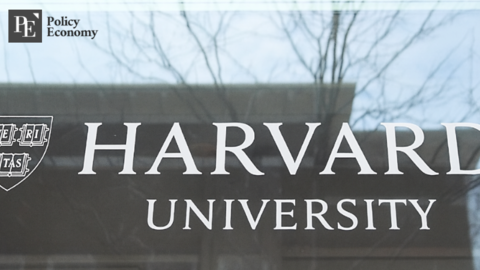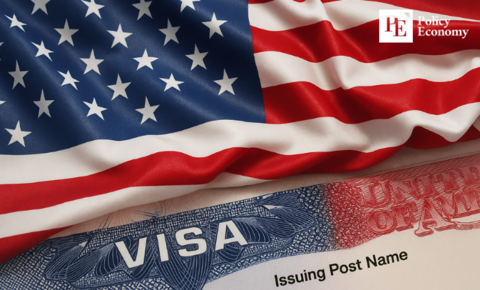From Vision to Reality: How the European Degree Label Is Redefining Higher Education
Input
Modified
A Label with Ambition: Opening the Door to a European Degree Legal Labyrinth: Unearthing the Real Barriers to Integration Towards a Coherent European Higher Education Area

A Label with Ambition: Opening the Door to a European Degree
The dream of a truly unified European higher education space is inching closer to reality. For years, universities across Europe have collaborated on research, student exchanges, and shared academic values. But while mobility and collaboration have blossomed under schemes like Erasmus+, the ambition of a single, coherent European degree has remained elusive. That may be about to change.
With the launch of the European Commission’s blueprint for a European Degree and the completion of pilot projects like ED-AFFICHE, Europe is now testing the waters of systemic transformation in higher education. At the heart of this initiative is the European Degree label—a modest but potentially revolutionary step that could dissolve long-standing legal barriers and usher in an era of transnational degrees, fostering deeper integration in the European Higher Education Area (EHEA).
The European Degree label is designed as a complementary certificate awarded to students graduating from joint programmes involving higher education institutions from multiple EU member states. Far from being a symbolic gesture, the label is the first formal move toward establishing a true European joint degree—a credential that is automatically recognized across Europe and underpinned by common European criteria.
In March 2024, the European Commission released a comprehensive blueprint outlining how such a degree might be realized. The proposal includes two potential implementation models: one where a European label is awarded alongside national degrees, and another where a joint European Degree qualification is granted by a consortium of institutions. Either way, the aim is to eliminate the legal and administrative fragmentation that currently hampers joint academic programming.
As Commission officials noted, this initiative is not meant to replace existing Erasmus Mundus or double/triple degrees. Instead, it should act as a value-adding framework, fostering student mobility, institutional cooperation, and global competitiveness of European education.
The label’s pilot phase is currently underway, with the ED-AFFICHE project—comprising six major European university alliances such as Una Europa, CHARM-EU, and 4EU+—leading the charge. These alliances, representing 51 higher education institutions across 22 countries, are testing how the label could be integrated into existing joint programmes and what roadblocks stand in the way.

Legal Labyrinth: Unearthing the Real Barriers to Integration
The project’s findings have laid bare the stark national differences that currently impede the implementation of joint degrees. Professor Kurt Willems, an education law expert at KU Leuven and lead academic on ED-AFFICHE, described the tangled patchwork of regulations as “conflicting and seemingly impossible to reconcile.”
The issues extend far beyond curriculum design or assessment methods. In many countries, legislation restricts the language of instruction, imposes specific diploma formats, or defines academic calendars in ways that make transnational cooperation exceedingly complex. Even such seemingly trivial matters as the thickness of diploma paper have proven to be stumbling blocks.
Despite these challenges, Willems highlighted a number of encouraging outcomes. For instance, Austria resolved several regulatory barriers during workshop sessions, while Poland began drafting new legislation in collaboration with universities. France and Italy have committed to longer-term reforms. In Greece, accreditation requirements and restrictions on foreign-language instruction were relaxed. Spain, in a significant breakthrough, agreed to waive certain legal provisions in favour of tailor-made consortium agreements better suited to joint degree structures.
Some countries have even begun testing “sandbox” environments—temporary legal exceptions allowing joint degree experimentation. These regulatory sandboxes provide an agile framework for testing what could eventually become long-term legal norms. Willems emphasized that such exemptions, if proven sustainable, could signal the start of a broader de-regulation process.
However, not all countries were ready to make such commitments. Some ministries preferred to wait and see how the European Commission would move forward before aligning national policy. Still, the coordinated effort and open dialogue have already created significant momentum for reform.

Towards a Coherent European Higher Education Area
One of the most notable achievements of the ED-AFFICHE project is its success in fostering systemic change through dialogue. According to Sophia Karner, senior policy officer at Una Europa, the process required “tremendous effort, flexibility, trust, and unprecedented levels of collaboration.” Institutions and policymakers alike had to rethink long-held assumptions about governance, quality assurance, and institutional autonomy.
Karner noted that while 80% of the pilot’s joint programmes were at the master’s level, a significant portion—62%—were already nationally accredited. This suggests that a European label could be applied without entirely reinventing the wheel. What remains is to build an enabling policy environment that reduces the resource-intensity of joint programmes and opens the door to broader participation.
As a next step, the European Commission is setting up a European Degree Policy Lab, where national experts, institutions, and students will collaborate on implementation guidelines. An annual European Degree Forum will also be launched to track progress and ensure shared accountability. Simultaneously, Erasmus+ support will continue, particularly through European Degree Pathway Projects that help institutions design new or adapted joint programmes that meet the agreed European criteria.
There is no one-size-fits-all approach to this transformation. As Willems argued, solutions such as applying the legal framework of the degree-awarding university or shifting certain competences to the European level must be evaluated case by case. However, he emphasized that what matters most is coordinated action across all member states—“using the same techniques to remove the same obstacles.”
The ED-AFFICHE project also proposed four design models for the label: awarding it to the student, awarding it to the programme, using it as a visual logo, or turning it into a full-fledged degree. Each model carries distinct legal implications, which will require further negotiation with national and regional regulators.
Maria Kelo, director of institutional development at the European University Association, praised the project’s recommendation to prioritize full implementation of Bologna Process tools—particularly the European Approach for Joint Programmes, which simplifies external quality assurance across borders. However, she also emphasized the need for a clear value proposition: any added reporting or administrative burden must be offset by the tangible benefits of a European Degree label.
A Continental Effort Worth Making
The European Degree label may be small in appearance—a certificate, a logo, or an annotation—but its implications are vast. It symbolizes not just academic mobility, but also legal harmonization, policy innovation, and a commitment to shared European values.
As Dr. Katrien Maes of LERU aptly noted in an earlier discussion, “The degree is a long way ahead of us.” But even if only a minority of students initially benefit, the process of making the label a reality is already catalyzing a paradigm shift in how Europe thinks about education, cooperation, and identity.
With countries like Austria, Poland, Spain, and Greece leading by example, and with institutions, ministries, and EU bodies committed to ongoing reform, the European Degree label is not merely a bureaucratic experiment—it is a blueprint for continental unity in one of its most powerful forms: education.
As the final deliverables of ED-AFFICHE are prepared for the European Commission’s event in Brussels on 29 April 2025, the groundwork laid this year could become the cornerstone of Europe’s next educational chapter. The label may be just a beginning, but in the realm of European higher education, it marks a beginning that matters.





















